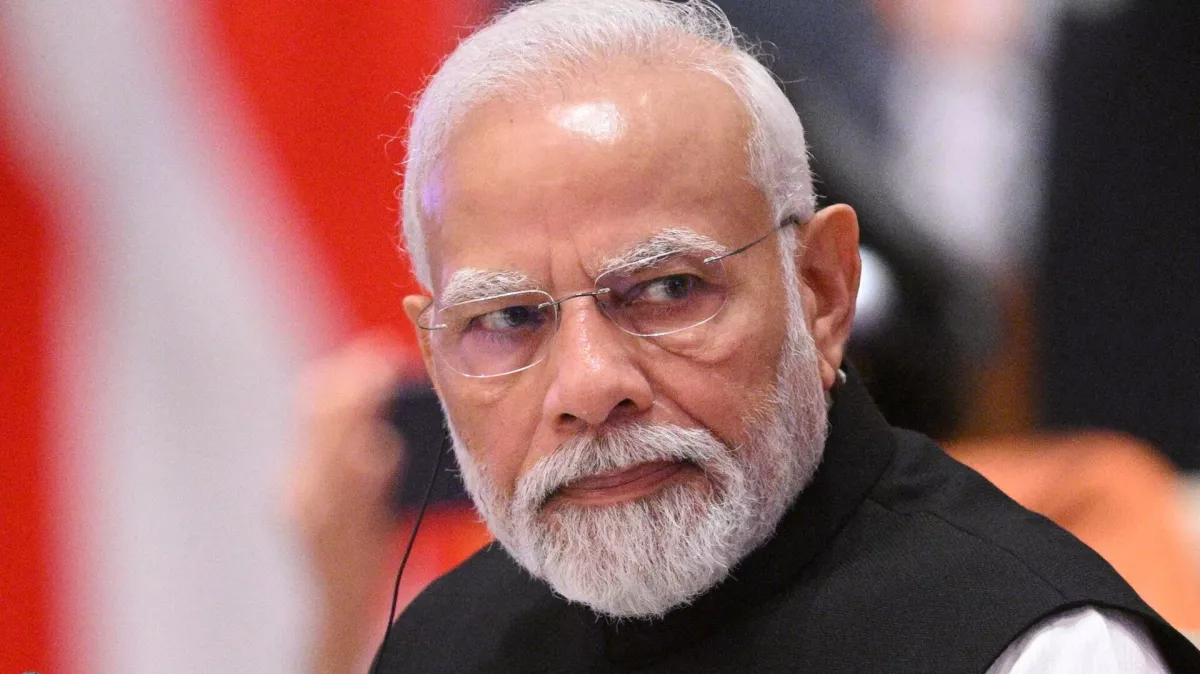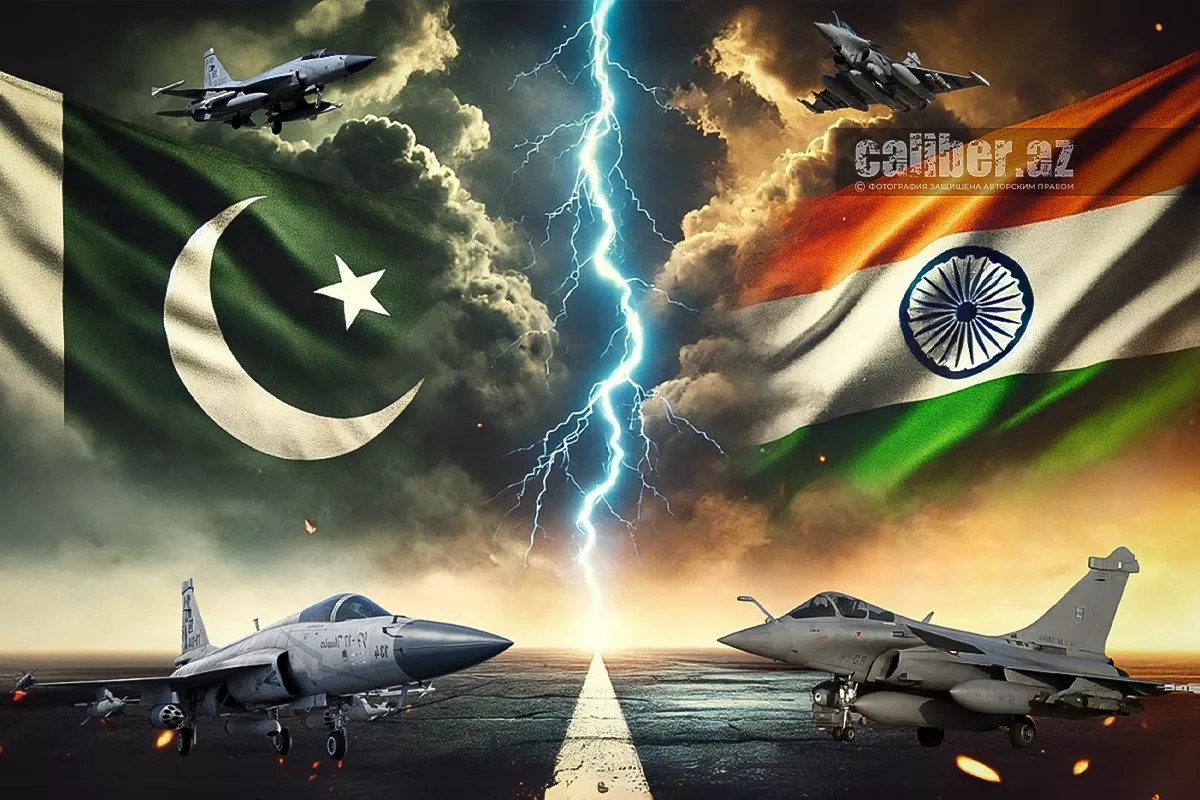Indo-Pakistani war and Azerbaijan’s rightful choice Expert opinions on Caliber.Az
As previously reported, Pakistan has responded harshly to India’s aggressive actions, which disrupted the fragile balance in the region. On May 7, 2025, India carried out a series of airstrikes on Pakistani territory, claiming the targets were allegedly terrorist group facilities. However, among the destroyed sites were mosques and educational institutions, resulting in the deaths of at least 26 civilians, including women and children. Pakistan regarded these actions as an act of aggression and a violation of international law. In response, Islamabad launched a large-scale military operation titled Operation Bunyan Marsus or “Lead Wall”, striking key military facilities on Indian soil. The response was precise and calculated—both militarily and politically.
Will New Delhi learn its lesson? And what are the deeper causes behind this renewed conflict? Caliber.Az posed these questions to international experts.

Russian political analyst and President of the Middle East Institute, Yevgeny Satanovsky, believes that the current war—despite India and Pakistan having fought multiple times in the past—is unlikely to escalate into a nuclear phase.
"Since these are states that were once part of the same country—just like Bangladesh—they have so far avoided destroying each other’s major cities. The fighting has been conducted exclusively between their armed forces," the political analyst noted.
At the same time, in his view, one should not expect that a ceasefire can be achieved if one side gains a noticeable advantage on the battlefield.
"And how do you force a country of one and a half billion people with nuclear weapons to surrender? By what means? Or Pakistan, with a population of 300 million and its own nuclear arsenal? Who is going to force them, and how?" he stressed.
Satanovsky also expressed doubt that India is capable of halting the military operations.
"Well, let’s call Modi and ask him—will he stop the war? And I’d be very curious to hear his answer, given his biography. Let’s not forget that he was the Chief Minister of Gujarat during the infamous Gujarat riots. Because of that, he was once under sanctions. Modi's character is, at best, dictatorial," the political analyst noted.

According to Satanovsky, despite the current successes of the Pakistani army, it is premature to declare any side a definitive victor.
“At this stage, we can only talk about short-term gains. However, according to many military experts, India always maintains a strategic advantage. That’s why Pakistan, fully aware of this, always tries to achieve maximum results in the early stages of a war. As for what comes next—we’ll have to wait and see,” he told us.
He also outlined the deeper roots of the conflict.
“The underlying cause of the conflict lies in the coexistence of Muslim and non-Muslim populations within the former British India. This is a common pattern seen across all former British colonies. Look at how the British Empire collapsed. Was Cyprus any different? What about the Israelis and Palestinians, or in Africa—in Nigeria or Sudan? The British always stitched together territories with Muslim populations and those with other religions. And when the British left, it was like champagne barrels that had been fermenting for too long—eventually, they explode. If you compare the timelines of Arab-Israeli wars and Indo-Pakistani wars, you’ll notice something curious: there’s often only a one-year gap between them. This trend appears in the 1940s, 1960s, and 1970s. So, the processes have similar root causes,” Satanovsky observed.

According to Belarusian military expert and retired colonel Leonid Spatkay, the Pakistanis fought using Chinese fighter jets and long-range Chinese missiles. While there is still insufficient information on the scale and type of forces involved, it is clear that the outcome has not favoured India, which lost between 5 and 7 aircraft, while Pakistan reportedly suffered no losses.
“This suggests that the Chinese have developed a very capable fighter jet and a long-range air-to-air missile, both of which have now been successfully tested in combat. It appears that China will soon overtake Russia as the primary arms supplier for many countries—especially in aviation,” Spatkay remarked.
According to him, Pakistan has officially confirmed that the targets were brought down using Chinese J-10C fighters. However, in his view, the J-10C is not even the best China has to offer. “It’s the workhorse of the war—affordable, not particularly outstanding in performance or equipped with cutting-edge electronics, but armed with PL-15 missiles that, even in their export version, have a range of 145 kilometres.”

“This simple aircraft, paired with an effective missile, shredded both European and Russian planes,” Spatkay said. “Yes, Indian pilots were flying those European and Russian aircraft—but the score is still convincing. So, congratulations are in order for Azerbaijan, which made the right choice by acquiring the JF-17 Block III from Pakistan. The Pakistani-Chinese multirole fighter is in no way inferior to its Russian counterparts—in some aspects, it even surpasses them.”
Equipped with an Active Electronically Scanned Array radar (AESA) that provides long detection ranges and the capability to simultaneously track 15 airborne targets and engage four of them at once, and armed with Chinese PL-15 air-to-air missiles, the JF-17 Block III is a serious adversary. “It poses a real challenge even to aircraft like the Russian Su-30SM, which has a significantly larger radar cross-section, allowing the JF-17 Block III to detect and launch radar-guided missiles long before the Su-30SM can spot it. Moreover, the Su-30SM is more vulnerable to heat-seeking missiles, as its twin engines generate a much larger infrared (heat) signature.”
Spatkay concluded by noting the cost-effectiveness of the JF-17 Block III: “Its listed price is $32 million—almost half the price of the Russian Su-30s, which were sold to China and Indonesia in 2003 for $50 million, to Uganda in 2010 for $54.2 million, and again to Indonesia in 2011 for $78 million.”








